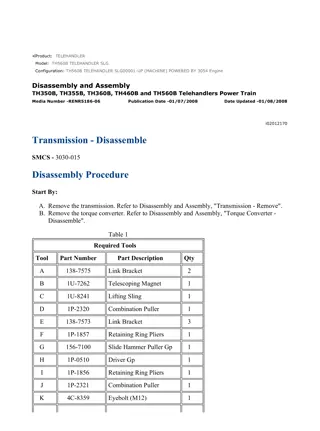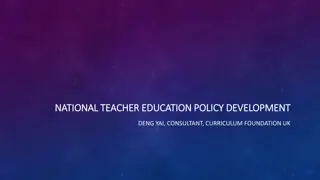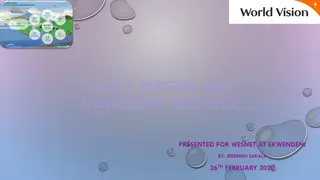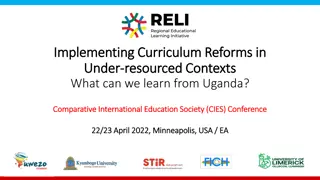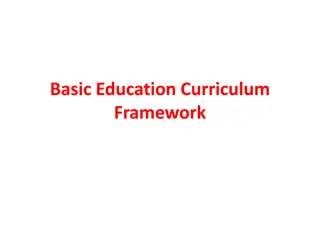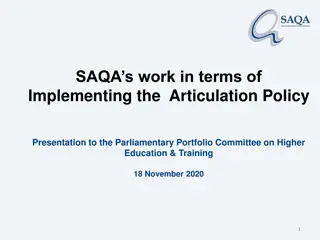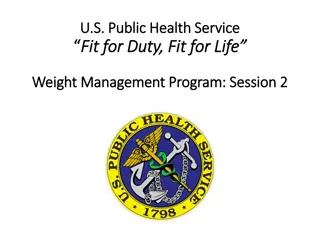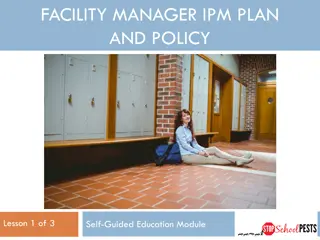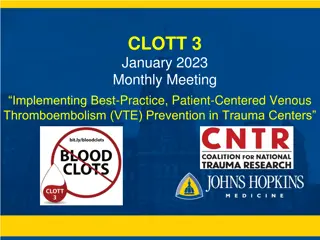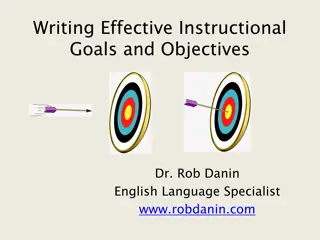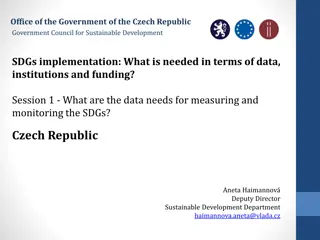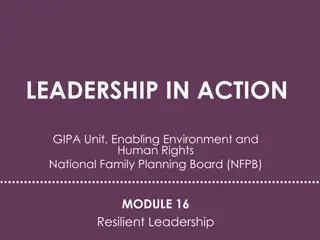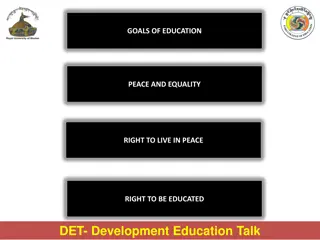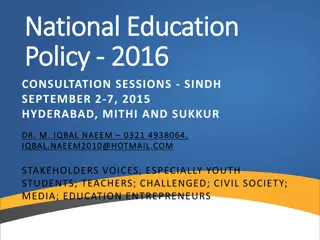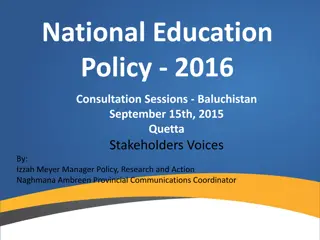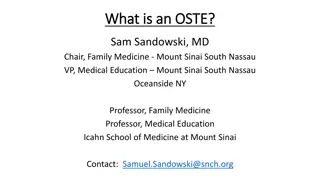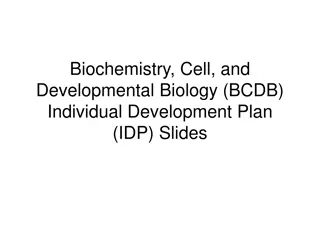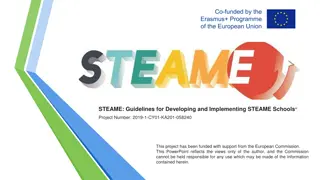Understanding and Implementing SLG Goals in Education
Dive into the significance of Student Learning Goals (SLG) in enhancing student learning outcomes, assessing growth, and informing instructional practices. Explore key components such as assessments, goal setting processes, and the role of SLG in evaluations. Gain insights into district rubrics, setting targets for students, and fostering collaborative conversations to support educators and students effectively. Discover the essence of celebrating successes, overcoming roadblocks, and the origin of goal setting in education.
Download Presentation

Please find below an Image/Link to download the presentation.
The content on the website is provided AS IS for your information and personal use only. It may not be sold, licensed, or shared on other websites without obtaining consent from the author. Download presentation by click this link. If you encounter any issues during the download, it is possible that the publisher has removed the file from their server.
E N D
Presentation Transcript
Articulate the impact SLG goals have on improving student learning Identify the characteristics of assessments that measure growth and inform instruction Utilize the components of the SLG goal template Create a common understanding of the depth of knowledge needed for college and career readiness Set targets for all students
Demonstrate familiarity with district rubric Describe proficient practice based on district rubric descriptors Provide feedback to educators based on evidence collected Calibrate of evaluators
Deeper examination of targeted components of the SLG goal setting process Understand the connection/relationship between content Understand the connection/relationship between context Revise personal goal based on today s learning content and assessment assessment context and baseline data baseline data
How we got where we are today Celebrating Oregon s successes Intention of SLG Goals Collaborative conversations Recognition for what you are doing well Educators and students get the support they need in real time
Find someone not at your table Share: Successes Roadblocks
Where does goal setting originate? *What is the role of SLG goals in overall evaluation? Who has to set SLG goals? Who are SLG goals set for? *What kinds of Assessments can be used? What is the scope of SLG goals? What is the difference between Achievement and Growth? *Pending USED approval of Oregon s waiver
Rationale added to the template *Category 3 removed State checklist and scoring rubric *Pending USED approval of Oregon s waiver
Targeted goals rather than school wide All goals must be focused on academic growth
Fully present Share your expertise Equity of voice Active listening Respect the current speaker no side conversations Safety to share different opinions and perspectives Respectful use of technology
Content: Based on the relevant content and skills students should know or be able to do at the end of the course /class, a clear statement of a specific area of focus is selected. These should be based on specific state or national standards. A statement such as CCSS in Math is not specific enough. Content:
Write arguments to support claims using valid reasoning and sufficient evidence, write informative/explanatory texts to examine and convey complex ideas, concepts, and information through the effective selection, organization, and analysis of content, and write narratives to develop real or imagined experiences or events using effective technique, well-chosen details, and well- structured event sequences. Related Oregon ELA standards: W. 9 10.1 - W.9 10.3, W.11 12.1 - W.11 12.3 Knowledge = Skills = Standards = Knowledge = YELLOW Skills = BLUE Standards = PINK YELLOW BLUE PINK
Content Example: HS Writing write arguments to support claims using valid reasoning and sufficient evidence, write informative/explanatory texts to examine and convey complex ideas, concepts, and information through the effective selection, organization, and analysis of content, and write narratives to develop real or imagined experiences or events using effective technique, well-chosen details, and well- structured event sequences. Related Oregon ELA standards: W. 9 10.1 - W.9 10.3, W.11 12.1 - W.11 12.3
Think about the content you wrote in your goal Do you still think it is appropriate? Why or why not? Do you need to narrow the focus? Share your reflections with someone at your table
Assessment: Describes how student learning and growth will be measured. In Oregon, two categories of assessments are used for SLG goals. Assessments must be aligned to state or national standards and meet state criteria. Assessment:
Districtdeveloped writing prompts will be used. These prompts are from vetted assessments such as NAEP, AP exams, and released statewide assessment items. Students will complete one formal writing piece for each type of writing (arguments, explanatory, narrative) which will be scored using the Oregon Writing Scoring Guide. Students will receive an average score calculated across all three essays.
How is learning measured? Performance tasks Which categories do the assessments fall under? Category 2 Are the assessments aligned with standards and do they meet state criteria? YES use state scoring guide
Think about the assessment you used Do you still think it is appropriate? Why or why not? What would you change? Share reflections with someone at your table How can you use the assessment you chose to measure the growth in the content you identified?
Digging Deeper into the Process Context: Description of the demographics and learning needs of all student in the class/course. Includes as relevant: number of students and their gender, race/ethnicity, socioeconomic status, attendance, and any students with diverse learning needs (EL, TAG, IEP, 504 plans). For those educators who do not meet with students on a regular basis, including contact time provides additional context for the goals developed.
60% of students enrolled in ABC Middle School receive free or reduced lunch. As the result of our school s block scheduling, all students participate in four 70 minute math periods per week. 82 students, or approximately 14%, are students with disabilities who have an IEP but are not eligible to take the extended assessment. 52 students are boys; 30 students are girls. 50% (41) of the students have IEP goals in math.
Think about the context in the goal you brought What context(s) did you include to address all the learning needs of your students? How did you use context to set targets and select strategies? What would you do differently? Share your reflections with someone at your table
Baseline Data: Provides information about the students current performance at the start of course/class. It is generally the most recent data available and can include the prior year s assessment scores or grades, results from a beginning of the year benchmark assessment, a pre-test, or other evidence of student learning. Determine students strengths and areas of weakness that inform the goal. Baseline Data:
Our original set of data included an analysis of OAKS results from the previous year which revealed a 48% gap in performance between students who received SPED services in Math and those that didn t. Only 31% of students with IEPs in math scored at or above proficiency. We have analyzed their results and found three distinct tiers of performance. Group 1: 31% of students met or exceeded Group 2: 44% of students nearly met Group 3: 25% of students did not meet
Share the baseline data in the goal you brought What are the strengths/limitations of the baseline data you collected? To what extent would the baseline data you collected allow you to tier your targets? How will context inform your tiers? How won t it? Share your reflections with someone at your table
Individually, examine the sample SLG goals As a table group, discuss and annotate the goals Highlight strengths and weaknesses Indicate what would you say to this educator to help them improve their goal
Are some of these goals good and others not so good? How do you know? How will your approach to writing or rating SLG goals change based on this exercise?
Reflect on todays learning Review your goal using the Quality Review Checklist. Justify your selection of YES or NO for each of the five questions with evidence from your goal.
Use an index card from your table to write down: Two new learnings or a-has you had as a result of today s professional learning One question you still have regarding the SLG goal setting process Homework for October Bring a draft of an SLG Goal that you develop for the 2014-15 SY




